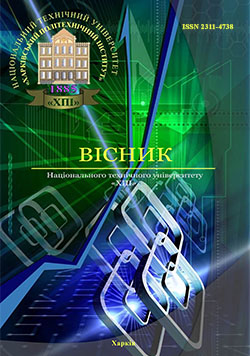MODEL OF THE QUALITY MANAGEMENT SYSTEM OF A MACHINE TOOL COMPANY
DOI:
https://doi.org/10.20998/2413-3000.2016.1173.18Keywords:
probability, adjacency matrix, the matrix of superposition, ergodicity, Markov chain, quality management systemAbstract
Development of models and methods such that would improve the competitive position of enterprises by improving management processes is an important task of project management. Lack of project management within the information technology and continuous improvement of methods for the management of the environment, interaction, community, value and trust, based on the strategic objectives of enterprises and based on models that take into account the relationship of the system, resulting in significant material and resource costs. In the current work the improvement of the quality management system machine-tool company HC MIKRON® and proved that the introduction of new processes critical analysis requirements for products, support processes of the products to consumers and enterprises in the formation of a system of responsibility, division of responsibilities and reporting (according to ISO 9001: 2009) is an important scientific and reasonable step to improve the level of technological maturity and structural modernization of enterprise management. For the improved structure of the analysis model and test the properties of ergodicity, as a condition of efficiency, a new quality management system.References
Bushuyev S. D., & Sochnev S. V. (1999). Entropy measurement as a project control tool International. Journal of Project Management. Elsevier, 17 (6), 343-350.
Tatt W. (1988). Graph Theory. Moscow: Mir 424.
Vaysman V. O. (2009). Project-driven organizations: models and analysis method block diagrams of process management. Scientific Proceedings of International Humanitarian University: The series “Project and Program Management”, 14, 4-12.
Kolesnіkova K. V., & Vaysman V. O. (2012). Optimization of project management-driven organization. Bulletin SevNTU: Series: Automation of processes and management, 125, 218-221.
Kolesnikova E. V., Vaysman V. O., & Velichko S. A. (2012). Developing states Markov model-driven engineering organization. Modern technologies in engineering, 7, 217-223.
Quality Management System. Requirements. (2009). ISO 9001 : 2009 (ISO 9001 : 2008, IDT). Kyiv, Ukraine, 25.
Quality management systems. Guidelines for quality management in projects. (2005). GOST ISO 10006-2005. [Publications in ISO 2003. ISO 10006: 2003, IDT]. Kyiv, Ukraine, 29.
ISO / FDIS 21500 (ISO PC 236, presented to ISO FDIS: 13.03.2012).
Vaysman V. O. (2009). Models, methods and mechanisms for the establishment and operation of project-driven organizations. Kyiv: Science World, 146.
Gogunsky V. D., Chernega, Yu. S., & Rudenko, E. S. (2013). Markov model of risk in projects of safety. Odes. polytechnic University. Pratsi, 2 (41), 271-276.
Vaysman V. O., & Gogunsky, V. D. (2011). Creating innovative new methodology of project-driven organizations. Ekonomіst, 8 (298), 11-13.
Kolesnіkova K. V. (2015). methodology of structural and parametric analysis of project management. Extended abstract of Doctor’s thesis. Nikolaev: Shipbuilding University adm. Makarova, 40.
Downloads
Published
Issue
Section
License
Copyright (c) 2016 Катерина Вікторівна КОЛЕСНІКОВА, Артем Олександрович НЕГРІ, Георгій Сергійович ОЛЕХ, Богдан Олександрович ЛЕБЕДЕНКО

This work is licensed under a Creative Commons Attribution-NonCommercial-ShareAlike 4.0 International License.
Our journal abides by the Creative Commons copyright rights and permissions for open access journals.
Authors who publish with this journal agree to the following terms:
Authors hold the copyright without restrictions and grant the journal right of first publication with the work simultaneously licensed under a Creative Commons Attribution-NonCommercial-ShareAlike 4.0 International License (CC BY-NC-SA 4.0) that allows others to share the work with an acknowledgement of the work's authorship and initial publication in this journal.
Authors are able to enter into separate, additional contractual arrangements for the non-commercial and non-exclusive distribution of the journal's published version of the work (e.g., post it to an institutional repository or publish it in a book), with an acknowledgement of its initial publication in this journal.
Authors are permitted and encouraged to post their published work online (e.g., in institutional repositories or on their website) as it can lead to productive exchanges, as well as earlier and greater citation of published work.

